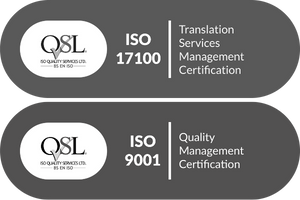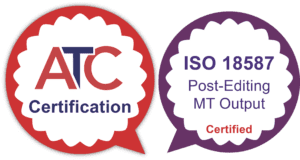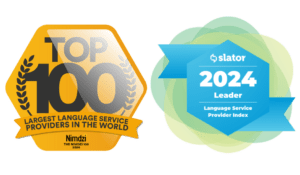Language services are essential to communication and understanding between providers and the individuals they serve who do not speak the same language. It’s important to have robust options available for every kind of encounter. Linguava interpreters can be accessed from different locations using phone or video conferencing technology. These options enable interpreters to provide language support even when they are not physically present in the same location. They are an effective way to facilitate communication through language access. Known as remote interpretation, this can take several forms, including OPI (over-the-phone interpretation), VRI (video remote interpretation), and SVI (scheduled video interpretation). Here we will explore the differences between each of these types and how you can use them effectively.
OPI – Over The Phone Interpretation
OPI, is shorthand for when your interpreter is not face to face with you and you communicate with them over the phone. This mode is often your first available resource for emergent situations where there is an immediate need. It’s also an ideal option for sharing routine information in short, simple appointments. OPI is effective in a variety of settings, including healthcare, legal proceedings, and business meetings. It is important to note that OPI can be more challenging for interpreters than other forms of interpretation, as they are not able to use visual cues and body language – make sure to measure your speech accordingly.
VRI – Video Remote Interpretation
Video Remote Interpretation is when your interpreter and you are in different locations and communicate with each other through a video conferencing platform. VRI allows the interpreter to see and communicate with you in real-time. This can be especially helpful in situations where nonverbal communication is important. VRI is often preferred in healthcare encounters. It enables healthcare providers to develop greater rapport with their patients who do not speak the same language. VRI is commonly used in legal proceedings, business meetings, and other settings where real-time interpretation is needed.
SVI – Scheduled Video Interpretation
Scheduled video interpretation is when your interpreter and you are in different locations and communicate through a video conferencing platform at a pre-arranged time. Scheduled video interpretation is ideal for situations where there is advance notice that interpretation will be needed, such as in a business meeting or medical appointment. SVI allows you to plan ahead and ensure that the necessary technology and resources are in place when you need it. Scheduled video interpretation is effective in a variety of settings, including healthcare, legal proceedings, and education.
Linguava offers you all of these options for remote interpreting services: OPI, VRI, and SVI. Each service has its ideal time and place, depending on your needs and the needs of the communities that you serve. We hope that this article has helped you to better understand the differences between them and how you can integrate them into your community engagement practices.
Remote Interpretation Solutions For You
At Linguava, we are committed to improving language access to the services that you provide. Are you looking for high quality Scheduled Video Interpretation, Video Remote Interpretation, Over the Phone Interpretation, American Sign Language or Translation and Localization services delivered with exceptional customer service? Connect with our sales team below to learn more.

If you have a file ready to translate, get your file analysis and free quote here.
Want to learn more about which remote service is right for you? We can help!
Video Transcript:
In our industry, we utilize a lot of acronyms, just like other industries as well. Three common acronyms that we hear a lot throughout our industry and our organization are OPI VRI and SVI
I’m gonna go through each one and give you a better understanding on what the acronym stands for and how to utilize that type of service starting with OPI.
[OPI]
OPI stands for Over the Phone Interpretation, also known as Telephonic. And this is a great way to be able to leverage the actual phones you have in your clinic, in your hospital, in your office, or your company to be able to literally pick up the phone, cell phone or landline, and be able to call out to your language service company and get an interpreter typically within seconds. Be able to connect right away and have that interaction and conversation with your patient in virtually any language. It’s a great way to provide immediate language access for your patients and also, leverage the current technology that you already have in your facility.
[VRI]
The next one would be VRI, also known as Video Remote Interpretation.
This is a great way to be able to connect with your patients via video. Think about like a Skype call or a Zoom call. Where you actually have someone on the iPad or PC camera where you’re able to connect with them. It could even be done on your actual phone camera as well.
You’re able to connect with an interpreter in virtually any language. Again, within seconds to be able to have that interaction with your patient. The nice thing about VRI as well, that’s a little bit different than OPI, is that you actually get to see the interpreter there. And the interpreter gets to see the interaction between you and your patient.
It creates just a different level of connection with your patient. Knowing that the interpreter is right there with you where you can see them. As opposed to OPI were you’re not able to see them. And again, that might make you want to choose one over the other depending on the type of appointment and depending on how much time you have. OPI is generally gonna be even faster of a connection and cover even more languages than VRI.
[SVI]
The third acronym, SVI or Scheduled Video Interpretation. Think about a zoom call that is prescheduled with you and your clients. You’re able to give that link to your language service company. And have an interpreter or interpreters join that link as well for that meeting or appointment that you have.
The nice thing about that is that now you have this pre-scheduled. And you have the interpreter or interpreters there ahead of time. And you’re able to debrief with them if need be. As well as continue your normal zoom call leveraging the platform that you already use. Whether that’s Zoom, BlueJeans, Google Hangouts, whatever that might be.
It’s a great way to provide language access.









